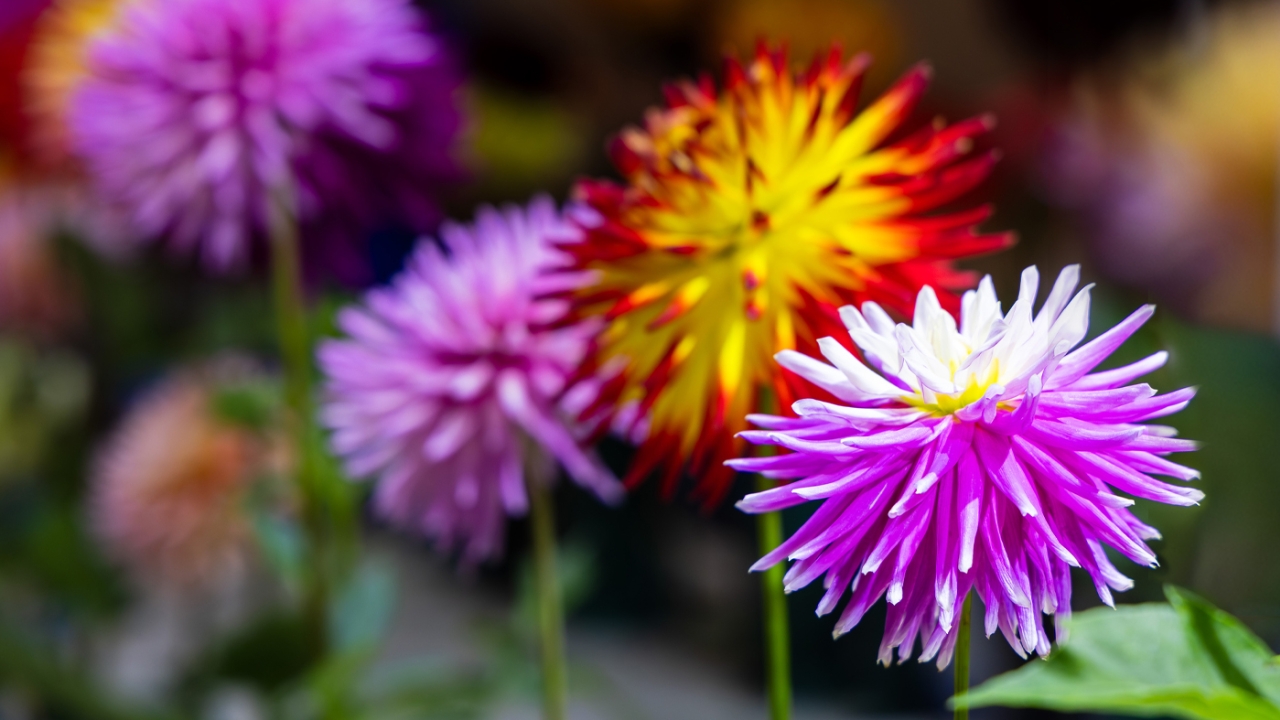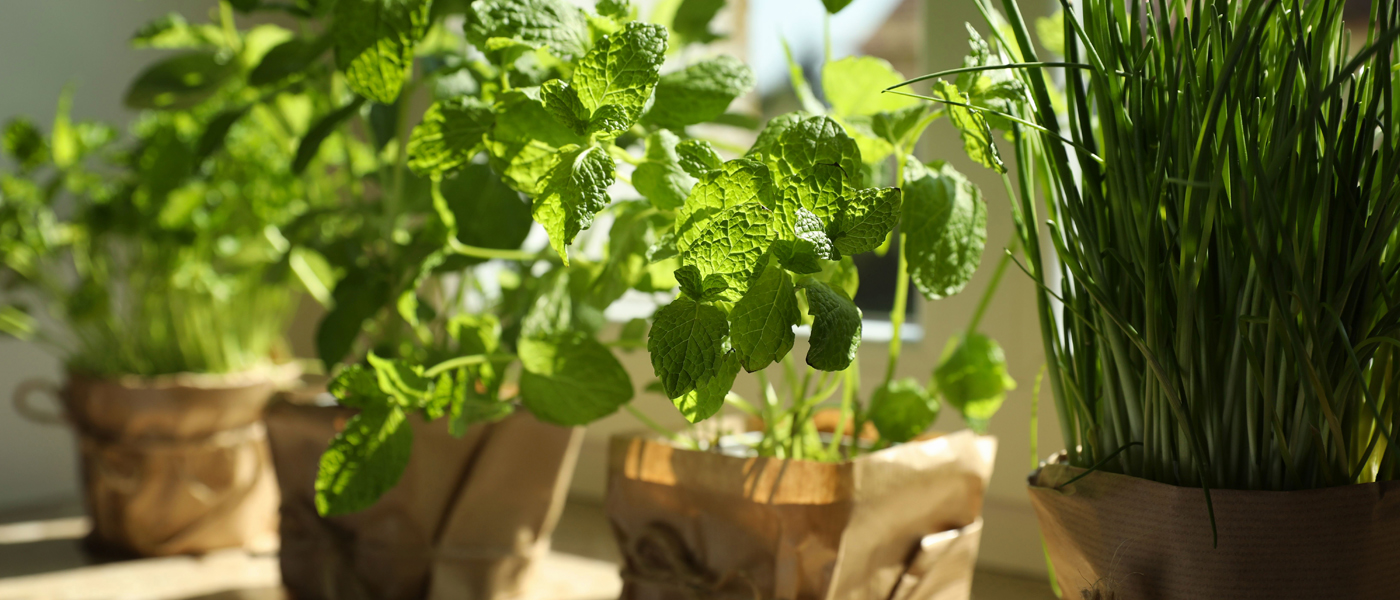

Smart Gardener
Bringing Houseplants Indoors
The cooler temperatures have put an end to tender annuals, herbs, and most perennials. If you haven’t brought in your houseplants from their summer vacation, do it now.

“It’s definitely time to bring them in,” said Tom Tiddens, the Garden’s plant healthcare supervisor. If you’ve left your tropical houseplants outdoors, the leaves were likely damaged. “Tropicals need to come in when the night temperatures drop to 45 degrees Fahrenheit,” he said. If palm trees, spider plants, Christmas cactus, hibiscus, or others suffered, cut off the frost-damaged leaves and set the plants in a bright window so they can recover in a few weeks.
A common concern when bringing plants indoors is how to deal with insects. “You want to be proactive,” Tiddens said. “If you don’t do anything, you’ll be fighting them all winter.” Pests—such as black fly, fungus gnats, and springtails— can enter the soil during the summer. Mealy bugs, scale, and spider mites can hitch a ride on the leaves. Deal with them now, and you’ll eliminate potential problems over the winter months.
Tiddens has a very large, potted citrus tree that spends the summer outside in his garden. His father grew it from a seed more than 30 years ago. “It lost its leaves many times when my dad had it, but it always recovered. Last year, when I brought it in and put it in a room with the most light, we noticed a small fly that likely came from the soil.” Many more appeared and he had to take action. After spraying the soil with an insecticidal soap, he placed a sheet of foil over the soil surface and over the pot’s rim. “I sprayed the top soil layer with the soap solution all winter long.”
Although Tiddens recommended using an insecticidal soap, which can be purchased in a garden center, he has caveats. “I try to stay on the more bio-rational, organic side, but even organic products can be harmful to pets.” Thus, always follow the label instructions when using any insecticidal product—organic or synthetic.
One chemical-free option is to simply dunk the entire plant, pot and all, if possible, in a bucket of water for several minutes to remove or kill insect pests. You may need to do this more than once. “Or, at least use a squirt bottle and spray water on the entire plant,” Tiddens suggested.
There are several brands of non-toxic insecticidal soaps made for use on houseplants. They come in ready-to-use, premixed sprays and you’ll find an EPA (Environmental Protection Agency) registration on the label. Yellow “sticky” cards are a simple, inexpensive alternative. They attract and trap flying insects such as whiteflies and fungus gnats. Place the cards in the pot or near the leaves. Look for these products at garden centers, hardware stores, and online. You can also make your own sticky trap by attaching a piece of yellow plastic or heavy paper to a popsicle stick or plastic fork and covering the yellow portion with petroleum jelly.
Common Houseplant Pests
Springtails
These tiny (1/5-inch long) wingless insects are mighty jumpers that inhabit the soil. They’re usually white or black and their presence in the top layer of moist soil is often a sign of overwatering. They typically feed on decaying organic matter, but they’ll also chew on tender plant parts. In large numbers, they can be a nuisance. Sticky traps will get some of these jumpers. Water the plant from the saucer and let the top inch or two of soil become dry.
Spider Mites
Webs between stems and leaves are the calling card of these tiny spider-like pests. The insects are so small you’ll need a magnifying glass or a hand lens to see them. They suck sap from the leaves, which become stippled with yellow dots or the leaves may be dry and limp, even while green. Mist the top and underside of leaves and the stems every few days with water to dislodge the mites and isolate the plant so the mites can’t travel and infest other houseplants.
White Flies
These tiny insects look more like moths than flies. You may notice them swarm in the air when you water the plant or touch the leaves. They quickly return to the plant to continue feeding. Females lay 30 to 40 eggs in a circle on the underside of the leaves. Once hatched, the nymphs suck plant sap for two to three weeks. The stressed plants may look yellow, sickly, or stunted. Remove infested leaves and rinse the rest with water before spraying with insecticidal soap every seven to ten days.
Scale
If you see tan or brown oval bumps (about 1/4-inch-long) on stems or leaves, it’s likely that they are scale insects. Their color often blends in with the plant. Two types of scale attack indoor plants: soft scale and armored scale. Soft scale excretes “honeydew” and armored scale does not. To determine whether the bump is an insect or part of the plant, gently scrape it off. If it comes off easily and the plant tissue is intact, it’s scale. Dip a cotton swab in rubbing alcohol (available in pharmacies) and touch it on the insects. You may need to do this once a week until they’re all gone.
Aphids
These colorful, pear-shaped insects—green, pink, white, brown, or gray—cluster around the tips of new leaves and flower buds. You may spot their antennae and legs without a magnifying glass. Aphids suck plant sap and produce sticky honeydew. Remove infested leaves and stems. Crush aphids with your fingers, if you’re so inclined, or spray them with water or insecticidal soap. You can also dip a cotton swab in rubbing alcohol or vegetable oil to dislodge the pests. Repeat weekly.
Mealy Bugs
If you spot masses of small, white “cotton” on leaves or along stems, it’s likely that they’re mealy bug egg sacs. The female mealy bug (about the size of a dill seed) is a soft-bodied insect covered with a fine secretion that looks like dusted flour (thus the name "mealy"). The nymphs are small versions of the adult females. The males have wings. Adults and nymphs suck sap from leaves and stems. They leave a sticky coating of honeydew that produces a sooty fungus. Dip a cotton swab in rubbing alcohol or vegetable oil to dislodge the pests and repeat weekly.
Fungus Gnats
The adult fungus gnat is a small (1/8-inch-long) dark, mosquito-like insect. It’s harmless but very annoying in large numbers. The larvae are often found in the top 2 inches of the soil. They feed on decaying plant material and roots. The adults live about seven to ten days, but the females can lay up to 200 eggs in the soil during that time. You can tell if the larvae are present by placing a few very thin slices of raw potato on top of the soil. The larvae will begin to feed on the potato within a few days. Look on the underside of the potato slice, too. To eliminate them, allow the top 2 inches of soil dry between watering. If possible, water the plant from the bottom but empty the saucer after an hour. Spray the top of the soil lightly with an insecticidal soap when you spot the pests.
Nina Koziol is a garden writer and horticulturist who lives and gardens in Palos Park, Illinois.

